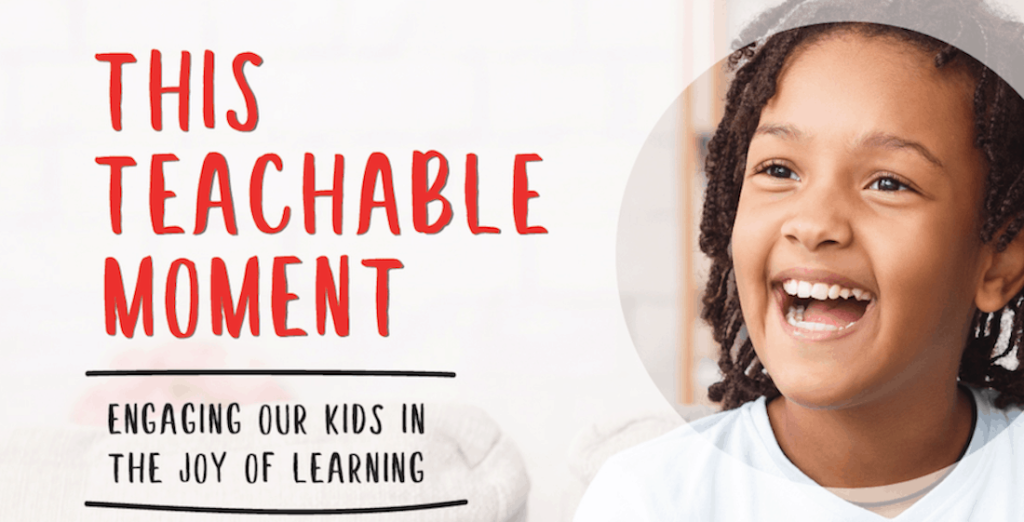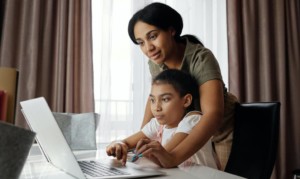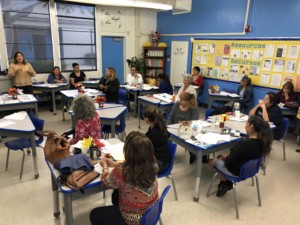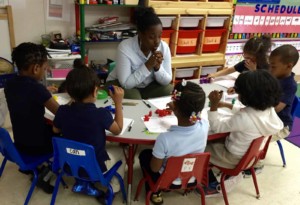A Resource for COVID-Weary Parents: New eBook on Doing PBL at Home

By: John Larmer
This past spring, with schools closed, parents and caregivers may have reached their limit. Their children have been stuck at home for months. If their school was able to manage remote teaching… If their household had adequate internet access and technology… If their parents and caregivers had the time and capability to manage home learning… If they were able to work well independently… Then, students may have been able to successfully continue their education. If the work they were assigned was meaningful and engaging, they may even have enjoyed learning from home.
Those are all pretty big “ifs.”
Instead, many students may have “virtually dropped out” of school for a while. For those that hung in there, parents and caregivers may have noticed the instruction their children were getting did not engage them or teach them very much of value. And now, faced with a long summer and the likelihood that school will look very different in the fall, families are wondering how they can support children in doing more meaningful learning at home.
Think of it this way: every parent and caregiver is a homeschooler now. But it’s not an easy role to play.
In our work supporting teachers and schools this spring, we’ve learned a few things about remote learning. We’ve been reminded—and many educators have realized—that now more than ever, this is the time for project-based learning (PBL). To help meet the needs of families, we’ve created a free resource.
A Free Resource for Families
In June, PBLWorks launched a new free eBook, This Teachable Moment: Engaging Our Kids in the Joy of Learning. It’s also available as a Kindle book on Amazon for 99 cents.
The eBook features a brief overview of the what and why of PBL, followed by a set of 21 K-12 projects that can be done at home. The projects build important knowledge and skills and meet the six criteria for High Quality PBL (which, by the way, Getting Smart played a key part in developing). Importantly, young people will find them interesting, even fun. They can be done with technology or without it, which will help address the educational equity issues revealed by differential access to technology at home among students.
And the good news for beleaguered parents who found it extremely challenging to direct their children’s learning at home while they tried to work? The 21 projects in the eBook can be done by families working together or by learners working independently with minimal supervision, depending on their age and capability.
Each project comes with step-by-step directions, questions to guide the process, and suggestions for sharing the products students create with others.
Example Projects Families Can Do at Home
- How does food connect us? Learners create a cookbook or video cooking show that includes family recipes and their origins.
- How can we use data to reduce our family’s impact on the environment? Learners analyze their family’s use of water, electricity, or gasoline and production of garbage and food waste, then create a plan for reducing it.
- How can we document our current reality with images? Learners learn about memoirs and documentation from past historical moments, interview people they know, and decide what images would best capture the experiences of their household.
- How can we demonstrate solidarity with others? Learners find out how a community in another part of the country or world is fighting an injustice, then create an action plan to help.
A Useful Resource for Teachers, Too
In June, we did webinars about This Teachable Moment for parents and caregivers, who liked what they heard. Some teachers also attended, and as we expected they saw it as useful for them too.
The directions provided for each of the 21 projects can be easily adapted by teachers for classroom use—or for remote learning, if that’s what’s needed in the fall. There are several projects that address current events; they’re about taking care of others and our communities, taking action on issues facing our nation and world, and documenting our lives in a historic time.
Here are a couple of the comments we got from teachers:
“Love these ideas and lessons to try out with my own kids this summer and being able to fine-tune them to work in the classroom.”
“These are all themes we have been discussing for the fall. I love that message.”
A Window Into More Meaningful Education
We think that something else was happening this spring, as parents and caregivers were monitoring the schoolwork their kids were doing at home. They might have seen that too many of the assignments students are given felt shallow, meaningless, and not engaging—and not very effective. However, some lucky families saw the opposite when their teachers facilitated well-designed projects online; their children were engaged and truly learning.
We believe this pause on education-as-usual will allow us to hit the reset button, and both parents and educators will see the need for a different kind of education. They’ll see how important it is that PBL be a big part of the change. We hope this eBook contributes to that project.
For more, see:
- Choosing the Right Tools for Amplifying Learning through PBL
- It’s Time to Reassess Our Understanding of the 4Cs
- Out With the Test, in With PBL: How Project-Based Learning is Transforming Remote Learning
John Larmer is Editor in Chief at PBLWorks. Find John on Twitter at @JohnlPBL.
Stay in-the-know with innovations in learning by signing up for the weekly Smart Update.
Getting Smart has launched the Getting Through series to support educators, leaders, and families on the path forward during such an uncertain time. This series will provide resources and inspiration as we face long term school closures, new learning environments, and address equity and access from a new lens. Whether you are just getting started with distance or online learning, or you’ve had plans in place and have the opportunity to share your work and guidance with others, there is a place for your voice and an opportunity to learn.
We’re going to get through this together, and we invite you to join us. Please email [email protected] with any questions or content you’d like considered for publication. We also invite you to join the conversation and on social media using #GettingThrough.





Ken
Hello John! I enjoyed reading this blog. I think book reading is the best habit to increase knowledge. The new ebooks you have shared about doing project-based learning (PBL) are very helpful to teachers and students both, because of it our children learn so much at home. Thank you very much for sharing!